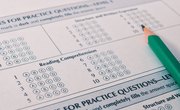Have you ever sat and read the same sentence in a textbook over and over without getting anything from it? Now that you're in college, the information you get from reading textbooks is often necessary for your success on tests. That's why knowing how to approach reading for college is important. The following steps will help you improve your reading skills and make the most of your college education.
Preview the text to get an overall idea of what it's about. Read the chapter titles and section headings. Look over the photographs or illustrations and any sidenotes or special features in the margins. Scan the text for any bolded terms. If there are questions at the end of the chapter, preview those, too.
Focus your reading by deciding on a purpose. Of course you are reading because you are required to for the class, but choosing another purpose will help you stay on track as you read. For example, if the assigned reading is a chapter from your history textbook about the Cold War, one purpose for reading might be to discover the major players in the war, or the major causes of the war. Use the 5 "Ws" in setting your purpose: Who, what, when, where and why.
Keep track of what you read by taking notes. There are a variety of ways to take notes. Some people prefer to jot down important ideas in a notebook. Others might create an outline. If you learn best by seeing the text in graphic form, try creating a chart or diagram or even sketching pictures of what you read.
Mark the text in your book. If you own the book and are comfortable with writing in it, use a highlighter to capture key ideas. Write notes in the margins, including definitions for difficult words or points your instructor makes during lectures. If you don't own the book or prefer not to write in it, use sticky notes instead; stick them right in your book.
Be certain you've understood what you've read by stopping after each chunk of text and summarize the main ideas. If you're working in a study group, stop after each paragraph and have each person write a summary of the paragraph. Then compare summaries so no one misses any key points.
Paraphrase bits of text, especially those that are difficult to understand. When you paraphrase something, you essentially translate it into your own words.
Stop and look up a word only if knowing the word is essential to understanding the text. If the sentence still makes sense even if you do not know the word, skip it and keep on reading. If you're curious about the word, look it up later, but don't let it interfere with your reading. A good way to remember new words is to create flashcards and quiz yourself.
Ask questions about things you don't understand. One way to do this is to jot questions down on sticky notes and stick them in the margin of the text. Then look for the answers to the questions as you continue reading. If you can't find the answers, ask a classmate or your instructor.
Read critically, or question the text. Look for the main points the author of the text is trying to make. Ask yourself if the main ideas of the text are supported with evidence and if the evidence is logical and reliable. Look for any holes in the ideas presented, and don't be afraid to challenge ideas you don't agree with.
Reread the text. You don't have to reread the whole text, especially if it's very long, but you will benefit from rereading sections that are either very complicated or that you had a lot of questions about.
Tip
If you learn best by hearing, try reading the text out loud. Even if you feel a little foolish doing so, reading aloud will allow you to both hear and see the text on the page.









